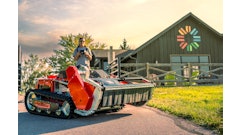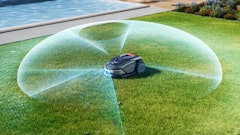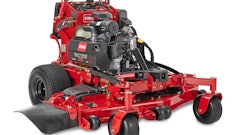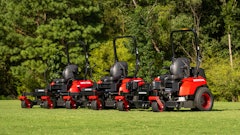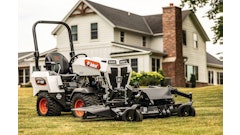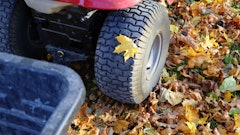
Most autonomous mowers can cut your lawn, avoid your client's patio furniture, and roll themselves back to charge. What they can’t do is truly understand the environment around them. That limitation isn’t just a technical curiosity but the reason robot mowers haven’t yet gone fully mainstream.
The missing link is perception. While the core functions of autonomous mowing — navigation, cutting, and charging — have matured, the ability to see and adapt to real-world complexity is still lacking. Existing systems rely on cameras and GPS with limited field-of-view, leaving them blind to unexpected objects, lighting changes, and subtle environmental variation. The next leap forward requires high-fidelity, wide-field, lighting-agnostic 3D sensing — technology that’s finally arriving thanks to breakthroughs in programmable solid-state chips that power advanced 3D sensing and LiDAR solutions. This isn’t just about better lawns. It’s about proving autonomy can work in the wild.
The Lawn Isn’t a Lab
These systems don’t just need to see better, they need to understand.
Yards may seem simple, but from the perspective of a machine, they’re a jungle of uncertainty. There are small animals, toys, hoses, fallen branches, garden gnomes, uneven terrain, fast-changing lighting, and the occasional toddler sprinting out mid-cut. It’s chaotic. Unlike the structured world of warehouses or factories, lawns present unpredictable, open-world challenges that demand more than basic navigation.
This point was underscored by a study led by Oxford researcher Dr. Sophie Lund Rasmussen, who tested how autonomous mowers handle wildlife. Her team used realistic hedgehog dummies to simulate small animal encounters. The result? Even the most advanced mowers struggled. Some stopped in time. Many didn’t. The takeaway is clear; these systems don’t just need to see better, they need to understand.
But the hedgehogs are just the beginning. If a mower can’t distinguish a lump of grass from a living creature, what else is it missing? Poor perception leads to safety issues, suboptimal performance, and broken trust. That’s the barrier to mass adoption.
The need for robust perception becomes even more critical in commercial settings, particularly golf courses, resorts, and large-scale campuses, where pristine turf and operational efficiency go hand in hand. These environments aren't just bigger, they're also more complex, often featuring undulating terrain, mixed grass types, and high-value foot traffic. On golf courses, for instance, a single stray golf ball or a divot can derail a mower that lacks proper object classification. Precision isn't optional here. Precision is essential for protecting equipment, maintaining surface quality, and ensuring uninterrupted play.
More about autonomous mowing on GreenIndustryPros.comThe 3 Keys to Onboarding Autonomous Mowers - Autonomous mowing experts explain how landscape professionals can adopt robotic mowing technology. Is Graze the Future of Commercial Lawn Mowing? - Graze CEO John Vlay introduces new autonomous, electric lawn mower for commercial sites Robotic Mower Trends & Insights - A few trends on commercial autonomous mowers have emerged. Let's take a look. |
Why Vision is the Bottleneck
Better perception unlocks new behaviors. Today’s machines follow a script. Tomorrow’s machines will improvise.
Most robot mowers today depend on a blend of perimeter wires, bumper sensors, GPS, and cameras. This works well in simple, repeatable environments. But when things get messy—when shadows shift, lighting flares, or a new obstacle appears—they falter. Their field of view is narrow. Their inputs are often 2D. They’re good at following rules, bad at adapting.
This is where advanced 3D sensing solutions come in. Unlike mechanical LiDAR, which involves spinning parts and fragile assemblies, solid-state beam steering powered by programmable chips offers a durable, compact, and lighting-independent alternative. These systems are enabling a new generation of perception technologies built specifically for outdoor autonomy — technologies that interpret dynamic environments in real time, with high fidelity and low power.
That means more than seeing a shape — it means knowing whether it’s a rock, a shadow, or a sleeping cat. It means not getting confused by glare or stuck under a lawn chair. It means operating confidently across all conditions, all day long.
From Mobility to Intelligence
Better perception unlocks new behaviors. Today’s machines follow a script. Tomorrow’s machines will improvise.
With next-generation 3D sensing, mowers will move from simply navigating to actively managing their environment. They’ll detect stressed grass and adjust cutting height. Recognize early signs of disease or overwatering. Avoid newly seeded patches. Shift mowing patterns based on use.
They won’t just follow instructions — they’ll make decisions.
That shift from mobility to intelligence is what will differentiate next-generation systems. Not just for consumers, but for commercial landscapers and enterprise maintenance teams who want consistency, safety, and insight.
Proof of Progress
The lessons learned about keeping pets safe and grass tidy can be applied to keeping pedestrians safe and jobsites productive.
The market is shifting fast. But it isn't just about unit volume. It's about trust. Consumer satisfaction is rising. Homeowners praise robot mowers for their quiet operation, reliability, and convenience. These aren’t tech hobbyists — they’re everyday users who now expect autonomous machines to do their job without supervision.
And key players are driving innovation. Husqvarna continues to refine terrain adaptability and precision edge handling. Worx has focused on eliminating perimeter wires, using GPS and efficient battery systems to make setup seamless. Meanwhile, John Deere is adapting its autonomy kit from commercial tractors into large-scale mowers, applying its agricultural playbook to solve for labor shortages in landscaping. These companies are advancing the state of the art in mobility, navigation, and automation.
But perception remains the gap.
Autonomy’s Proving Ground
Lawn care isn’t just a use case — it’s a proving ground. Any system that can handle a yard full of unpredictability is likely capable of handling more complex autonomous challenges across industries.
Construction, agriculture, last-mile delivery, and even sidewalk robots all share the same need: robust, adaptable, outdoor perception. The 3D vision stack built for mowing can transfer directly into these adjacent domains. The lessons learned about keeping pets safe and grass tidy can be applied to keeping pedestrians safe and jobsites productive.
That’s why this moment matters. It’s not just about mowing. It’s about proving that perception-first autonomy works in real-world conditions, not just in labs or test tracks.
We stand at a threshold in the industry. Robot mowers are already navigating our lawns, but the move toward truly intelligent, perception-driven autonomy is just beginning. What separates the next generation of robot mowers isn’t just smarter software but a stronger foundation for perception.
By pioneering solid-state beam steering, fragile mechanical lidar can be replaced with rugged, programmable optics designed for the unpredictability of outdoor environments. It’s the kind of upgrade that doesn’t just improve mowing but expands the frontier of outdoor autonomy, from turf to tarmac.

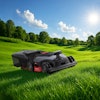

![Gravely Pro Turn Mach One My23 Dsc03139 Edit 1200x800 5b2df79[1]](https://img.greenindustrypros.com/mindful/acbm/workspaces/default/uploads/2025/10/gravely-pro-turn-mach-one-my23-dsc03139-edit-1200x800-5b2df791.BucBnDoN22.jpg?auto=format%2Ccompress&fit=crop&h=100&q=70&w=100)

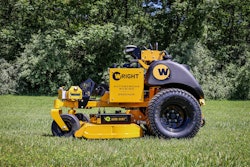
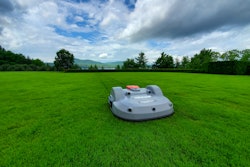
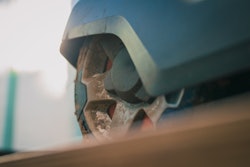
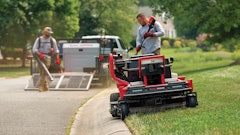
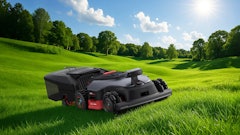
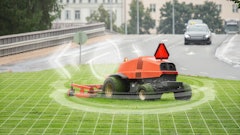
![Gravely Pro Turn Mach One My23 Dsc03139 Edit 1200x800 5b2df79[1]](https://img.greenindustrypros.com/mindful/acbm/workspaces/default/uploads/2025/10/gravely-pro-turn-mach-one-my23-dsc03139-edit-1200x800-5b2df791.BucBnDoN22.jpg?ar=16%3A9&auto=format%2Ccompress&fit=crop&h=135&q=70&w=240)
